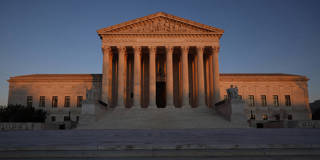OnPoint Subscriber Exclusive
Longer Reads provide in-depth analysis of the ideas and forces shaping politics, economics, international affairs, and more.

The Lost Liberal Legal Imagination
Over the past few decades, the US Supreme Court has embraced methods of statutory interpretation that conveniently justify its radical rightward shift. As much as the progressive twentieth-century jurist Felix Frankfurter might lament this development, he bears much responsibility for it.
LONDON – The right-wing majority on the US Supreme Court holds the US Constitution in a vice-like grip. It took barely a moment to overturn Roe v. Wade, and with it, a half-century of jurisprudence. It is now engaged in a sustained assault on the “administrative state” (federal regulatory and enforcement agencies) and, if Justice Clarence Thomas gets his way, perhaps on contraception and same-sex consensual relations, too.